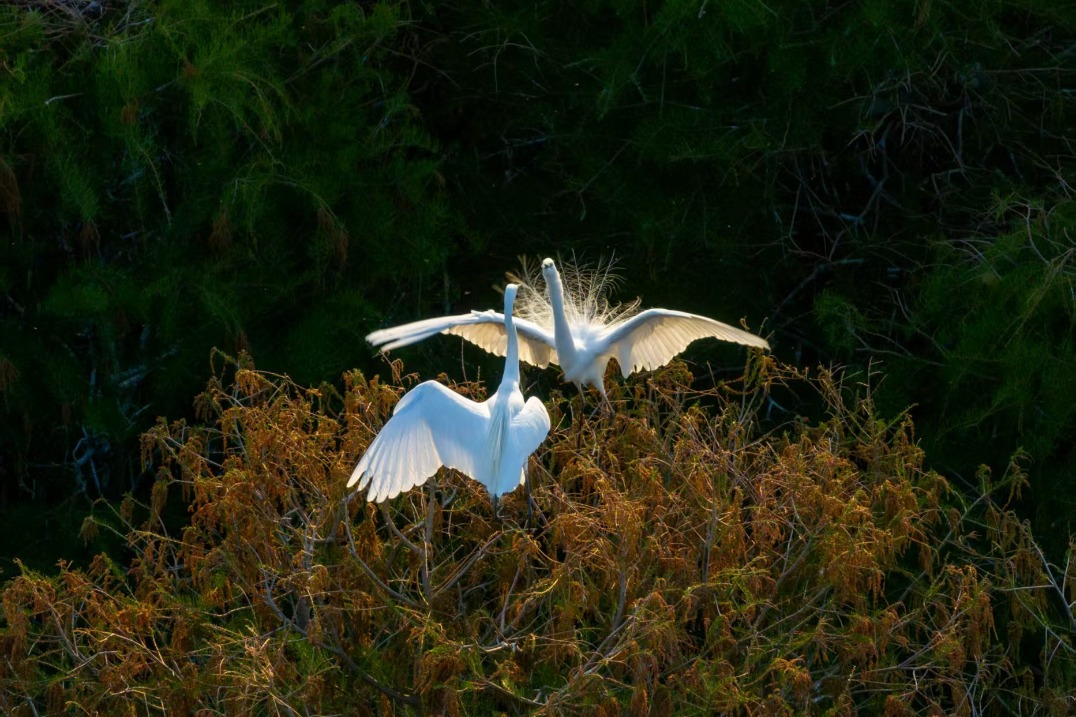The flight to recovery
Government and public monitoring of migratory birds is helping boost numbers, Wang Xin reports in Shanghai.


An Siwei, a Fudan University alumna who works at the reserve, measures a great knot bird to gather information for banding, a decadeslong task that involves attaching identification tags to the birds to track them and their routes.[Photo by Gao Erqiang/China Daily]
In the middle
The annual routes migratory birds traverse are known as "flyways". There are nine major flyways around the world, including the East Asian-Australasian Flyway, which stretches from Alaska and the Russian Far East, southward through East and Southeast Asia, to Australia and New Zealand. It encompasses 22 countries and regions.
The flyway is used by more than 50 million birds and over 250 species, including 36 that are globally threatened and 19 that are near-threatened, according to the East Asian-Australasian Flyway Partnership, a network of partners across the EAAF that protects migratory birds.
Normally, birds migrate twice a year. In the fall, they fly south to winter, and in spring, they head back north to breed. In the middle of this flyway, and listed by the Ramsar Convention as a Wetland of International Importance, the Chongming Dongtan reserve is a critical stopover site. The convention is an international treaty that came into force in 1975.
"Many birds fly more than 10,000 kilometers in a single trip between breeding and wintering grounds. Generally, they cannot finish the entire journey in one go, and have to stop over along the way to rest and refuel. Many shorebirds are very dependent on mudflats bordering the sea, like Dongtan," Ma says.
In the past few decades, coastal mudflats have undergone sharp decline as a result of reclamation and excessive exploitation for urbanization and economic development, which has resulted in a rapid decrease in many waterbird populations as a consequence of the loss of habitats.
Fortunately in recent years, China has placed increasing emphasis on environmental protection, introducing a slew of regulations and policies to protect wetlands and bird habitats, as well as to promote ecological restoration.





































